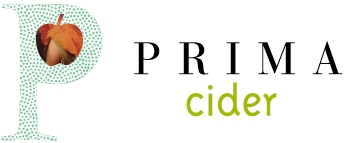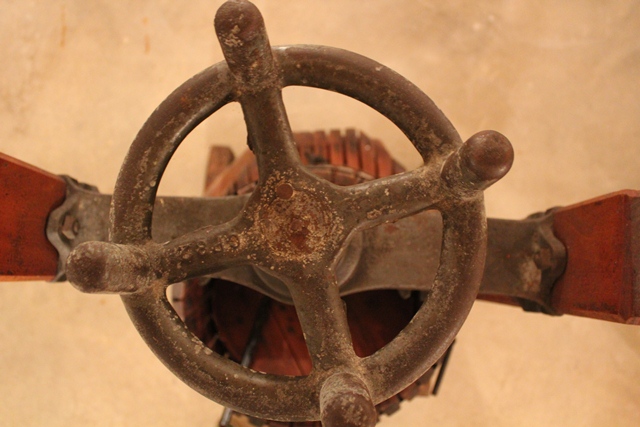The growing U.S. appetite for regional craft beers is having a positive, knock-on effect for the makers of local cider, sparkling and still wine. According to the Brewers Association, the craft beer industry grew by more than ten percent last year, continuing nearly a decade of strong expansion. U.S. cider sales are also up, increasing 23% from 2010, the fourth straight year of double-digit growth, according to Euromonitor International.Today’s Midwest beverage scene, teeming with local libations, is seeing its ranks grow as consumers, awakened to new possibilities by craft beers and the local food movement, fuel growth in other beverage segments, like regional wines.
Bill Oliver, owner of Oliver Winery in Bloomington, Indiana puts it this way: “We’re selling 350,000 cases of wine a year, so I guess we’ve changed somebody’s mind.” Oliver also makes Beanblossom Hard Cider, which it relaunched last year. “I think people are just looking for something new and different and it was cider’s time,” says Oliver. ”I’d like to describe it as some sort of moment of truth, but I think as people’s palates evolve they want something more interesting, something different. They’re tired of beer or whatever they’ve been drinking.”
Hard Cider: The Evolving Palate
Cider has seen astronomical growth in recent years. For example, the presence of cider in restaurants has increased by nearly 90% in the first quarter of 2012 compared to the first six months of 2011, says Technomic’s MenuMonitor. Helping the sales of hard cider is its popularity among women who consume an equal of amount as cider as males, according to the Wall Street Journal.
According to industry analysts, one reason for increased cider consumption is the growth of craft beer. Bruce Wright, a partner at J.K.’s Scrumpy in Flushing, Michigan, is quick to acknowledge the role craft beer has played in cider’s new, unbridled momentum. “It’s those kind of guys [craft brewers] who have…been the pioneers for beer to change and they’ve defined what consumers want,” says Wright. “We’re trying to do the same thing with our cider. I mean, we don’t fit into a category….we wanted to make something that was ours and so that’s what we did.”
Wright believes that cider is filling a gap in the market. “Hard cider fits in that middle ground for the person that doesn’t want to drink beer or have a glass of pinot,” he says.
Erich Bertsche of the Chicago based Prima Cider says people who used to be only beer drinkers are not only open to trying new brews but actively searching for them. Bertsche says this change in consumer preferences will prompt local cider makers to go to greater lengths to source their apples locally. “Now you will start to see a bunch of local cideries sourcing local apples to serve the market,” he said.
See related story: Prima Cider Rides the Hard Cider Wave
The new competition in the local cider industry is not a concern for J.K Scrumpy’s who’ve been making cider for more than a century. Rather, Wright sees this recent growth as a very positive development that is helping to preserve Michigan’s remaining cider apple orchards. “In 1970, in the area of Flushing, Michigan, a suburb of Flint, there were thirty-seven orchards, and now there are two,” he said. “So we want to preserve the orchards and we think we’re doing the right thing making a local cider.”
Sparkling Wine: Locavore Galore
There are also indications that the craft beer industry, together with the local food movement, is having a domino effect on sparkling wine consumption in the Midwest where some sparkling winemakers are experiencing strong growth. In the U.S., the consumption of sparkling wines has increased in recent years as growing numbers of wine drinkers see it as an acceptable and cheaper alternative to champagne.
Jill Joyce, Director of Brand & Product Development at Illinois Sparkling Company says people’s attitudes towards regional sparkling wine have changed considerably over the last four years. Joyce says proof of this change was apparent when they launched Illinois Sparkling Company during 2011. Illinois Sparking is made in Peru, Illinois using 100% Illinois grapes.
“Right now we’re struggling to keep up with demand. Whether it’s restaurants or retail, or just the general consumer, they’ve been really excited to try something different and new,” Joyce says.
Joyce says another factor in sparkling wine’s favor is that while makers of still wine in the Midwest have struggled against negative stereotypes, local sparkling winemakers have been relatively immune to these prejudices. “Domestically there are some really great sparkling wine producers here in the Midwest, especially in Michigan. Nobody associates that all good sparkling wines must come from a certain place,” says Joyce.
The makers of still wine in the Midwest do often suffer from consumer prejudice, but for Oliver the success of the craft beer industry is also helping wineries and wine organizations across the region change these negative attitudes. “I think we all kind of live under that stigma of, if it’s not from California, New Zealand, or from France, then it’s not good wine,” he says. “We have patiently worked to change people’s minds.”
For Oliver, changing consumer attitudes comes down to one on one interactions, changing minds one person at a time. “I go out and spread the story of Oliver wine. I also take people out to the vineyard to do vineyard tours, to do wine tastings at the vineyard, to do cellar tours, to go in-depth. It’s really that intimate; high impact human contact where people walk away going, ‘wow they really know what they’re doing, and the wines are really, really good.’ It’s something that we all have to do.”

